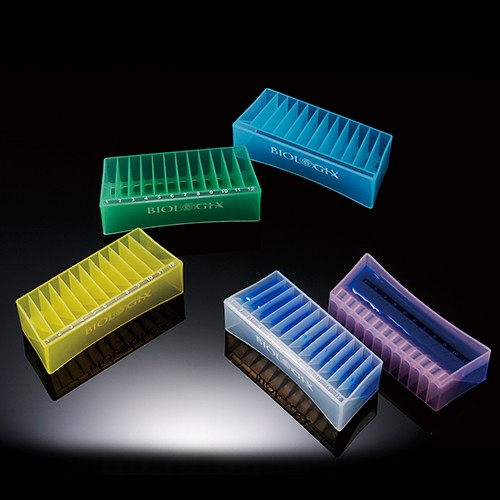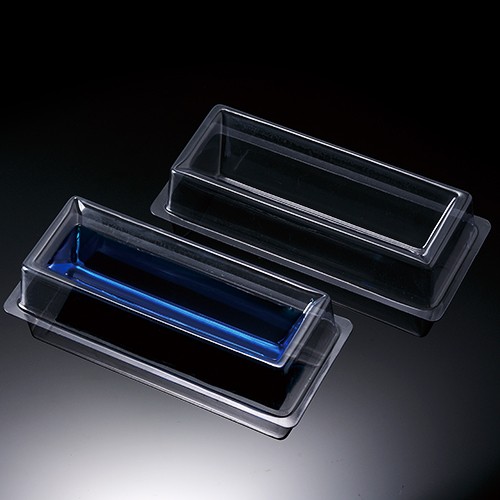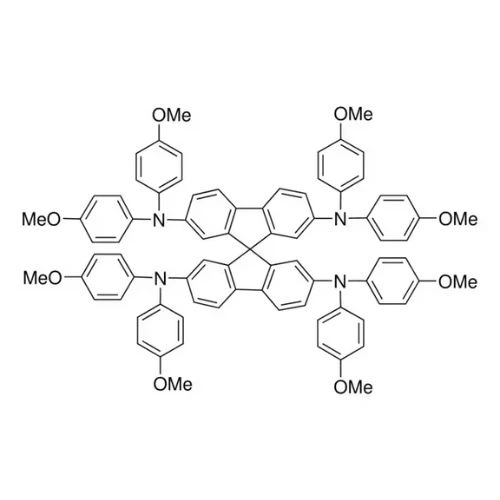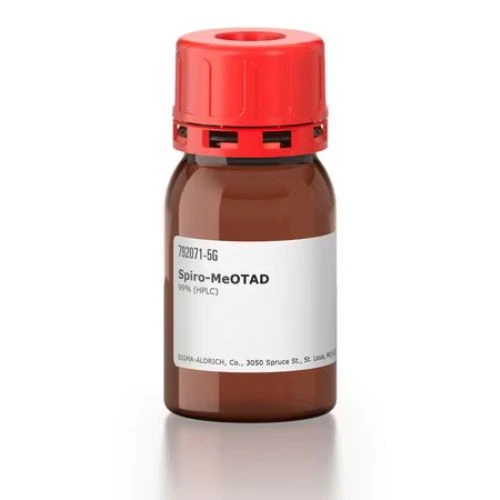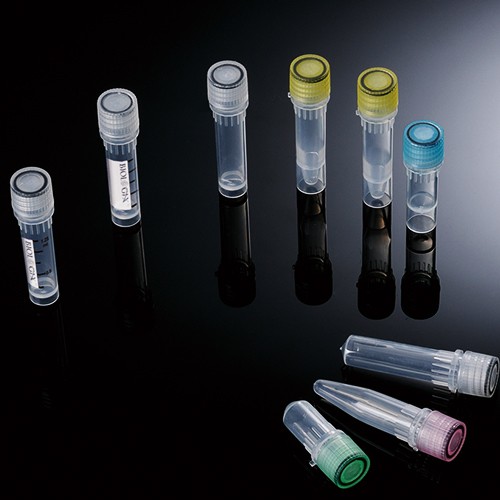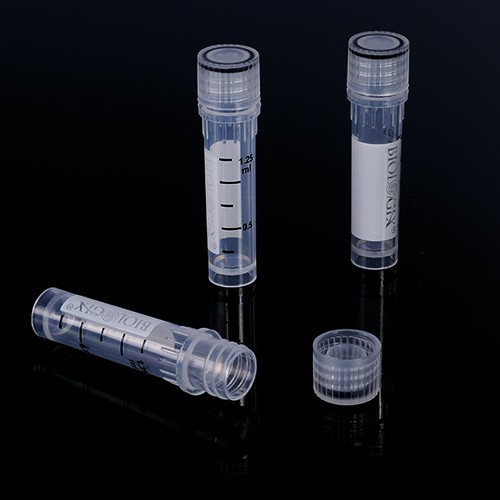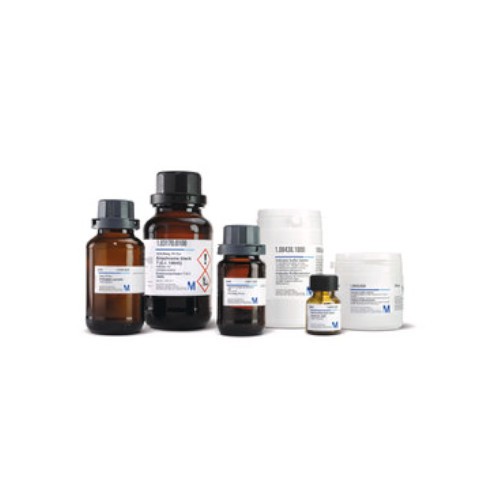
Sodium peroxide for synthesis
RM333.00Brand:
Merck
Description
CAS number: 1313-60-6
Chemical Formula: Na₂O₂
Molar Mass: 77.98 g/mol
Synonyms: –
Product Specification and MSDS for Sodium peroxide for synthesis (Merck).

Sodium sulfate anhydrous for analysis EMSURE® ACS,ISO,Reag. Ph Eur (Merck)
Price range: RM85.00 through RM105.00Brand:
Merck
Description
CAS number: 7757-82-6
Chemical Formula: Na₂SO₄
Molar Mass: 142.04 g/mol
Synonyms: –
EMSURE® grade solvents are suitable for a broad spectrum of classical lab applications and are frequently used in regulated and highly demanding lab applications. EMSURE® provides worldwide best and most extensive product specifications. We declare our EMSURE® range to be in compliance with the ACS, with the reagent part of the European Pharmacopoeia (Reag. Ph Eur) and also with the ISO standards.
Product Specification and MSDS for Sodium sulfate EMSURE® (Merck).
Solution Basins (Solution Reservoirs)
RM0.00Brand:
Biologix
This item is not available at the moment. Please contact us for more information.
Characteristics
- Made of PVC, polystyrene (PS), or strong polypropylene (PP),PVC basins have transparent walls to permit easy viewing of contents
- Polypropylene basins are chemically resistant to alcohols and mild organic solvents
- PS one-channel basins are available in three sizes: 25ml, 55ml, and 100ml; 25ml and 55ml basins have a V-shaped bottom design
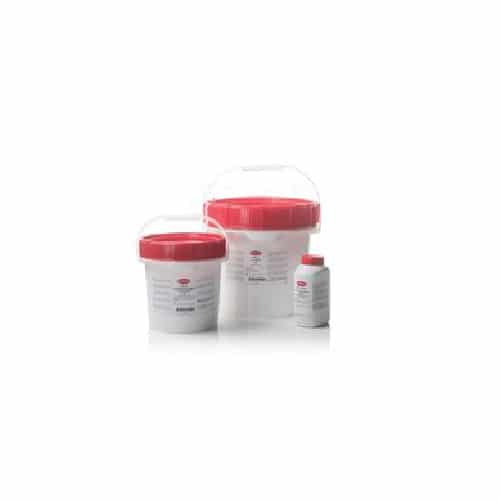
Sorbitol MacConkey Agar 500g
RM591.00Brand:
Thermo ScientificTM OxoidTM
- Oxoid Sorbitol MacConkey Agar is a selective differential medium for the detection of E. coli O157.
- Also available C-T Supplement, Part No. SR0172E and SR0172H.
Sorbitol MacConkey Agar Base, Oxoid Composition
| Typical Formula* | gm/litre |
| Peptone | 20.0 |
| Sorbitol | 10.0 |
| Bile salts No.3 | 1.5 |
| Sodium chloride | 5.0 |
| Neutral red | 0.03 |
| Crystal violet | 0.001 |
| Agar | 15.0 |
| pH 7.1 ± 0.2 @ 25°C |
Sorbitol MacConkey Agar, Oxoid Preparation:
Suspend 51.5g in 1 litre of distilled water. Bring to the boil to dissolve completely. Sterilise by autoclaving at 121°C for 15 minutes. Allow to cool to 50°C. Pour into sterile Petri dishes.
If required, reconstitute one vial of C-T supplement per 500ml medium, according to the instructions in the product leaflet. Aseptically add this to cooled medium before pouring into sterile Petri dishes
Storage conditions and Shelf life
Dehydrated Sorbitol MaConkey Agar must be stored tightly capped in the original container at 10-30ºC.
Oxoid Sorbitol MacConkey and Cefixime Tellurite Sorbitol MacConkey plates should be stored in the original packaging, at the temperature stated on the pack or product specification, and protected from direct light. When stored as directed, the unopened product will remain stable until the expiry date on the label.
Locally prepared media can be stored for up to 2 weeks when made from CM0813 and SR0172 according to the manufacturer’s instructions and stored at 2-8ºC, out of direct sunlight and protected from dessication. A longer shelf life may be attainable, but should be validated under the relevant, local manufacturing and storage conditions.
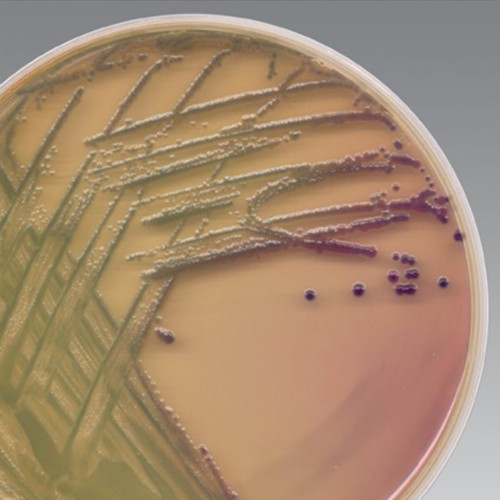
Sorbitol McConkey With BCIG 500g
RM983.00Brand:
Thermo ScientificTM OxoidTM
- Oxoid Sorbitol MacConkey Agar w/BCIG is a selective medium containing the chromogenic substrate BCIG.
- Can be used with C-T Supplement, Part No. SR0172E and SR0172H.
Sorbitol MacConkey Agar w/BCIG, Oxoid Composition
| Typical Formula* | gm/litre |
| Peptone | 20.0 |
| Sorbitol | 10.0 |
| Bile Salts No. 3 | 1.5 |
| Sodium chloride | 5.0 |
| Neutral red | 0.03 |
| Crystal violet | 0.001 |
| Agar | 15.0 |
| 5-bromo-4-chloro-3-indolyl-b-D-glucuronide (BCIG) | 0.1 |
| pH 7.1 ± 0.2 @ 25°C |
Sorbitol MacConkey Agar w/BCIG, Oxoid Preparation:
Suspend 51.6g of SMAC with BCIG in 1 litre of distilled water. Mix well and sterilise by autoclaving at 121°C for 15 minutes. Pour into sterile Petri dishes.
Storage conditions and Shelf life
Store the dehydrated medium at 10-30°C and use before the expiry date on the label.
Store the prepared plates at 2-8°C.

Soy Peptone 400g
RM455.00Brand:
Thermo ScientificTM OxoidTM
Thermo Scientific™ Oxoid Soy Peptone is obtained by the hydrolysis of soya flour and complies with the USP specification.

Sp100 Spiramycin
RM0.00Brand:
Thermo ScientificTM OxoidTM
Spiro-MeOTAD, 99% (HPLC) – Sigma-Aldrich
Price range: RM2,637.00 through RM9,707.00Brand:
Sigma-Aldrich
Synonyms
N2,N2,N2′,N2′,N7,N7,N7′,N7′-octakis(4-methoxyphenyl)-9,9′-spirobi[9H-fluorene]-2,2′,7,7′-tetramine, Spiro-OMeTAD
Cas No.
207739-72-8
General description
We are committed to bringing you Greener Alternative Products,which adhere to one or more of The 12 Principles of Greener Chemistry. This product is an enabling product used as a Hole Transport Material for high-performance solar cells and thus has been enhanced for energy efficiency. Click here for more information.
Application
High-mobility material used for white OLEDs to increase hole injection and transport. It is the best solid-state hole transporting material, to date, used to replace the liquid electrolyte for DSSC solar cells, due to an excellent pore-filling property in nanoporous TiO2 film with pore size of around 30-50 nm; attributed to its small molecular size.

Spot Indole Reagent (DMACA) BTL/25ml
RM0.00Brand:
Thermo Scientific™ Remel™
Thermo Scientific™ Remel Spot Indole Reagent is for determination of the ability of microorganisms to split indole from the tryptophan molecule by the spot test method.

Sputasol (Liquid)
RM477.00Brand:
Thermo Scientific™ Remel™
Thermo Scientific™ Remel™ Sputasol is a liquifying agent for sputum samples.
- Each vial dilutes in sterile distilled water to make 100mL
Sputasol, Oxoid Composition
| Formula | per vial |
| Dithiothreitol | 0.1g |
| Sodium chloride | 0.78g |
| Potassium chloride | 0.02g |
| Disodium hydrogen phosphate | 0.112g |
| Potassium dihydrogen phosphate | 0.02g |
| Water | 7.5ml |
| pH 7.4 ± 0.2 @ 25°C |
Sputasol, Oxoid Preparation:
Aseptically add the contents of one vial (7.5ml) to 92.5ml of sterile distilled water. Use the working solution immediately or store at 2-8°C for upto 48 hours only.
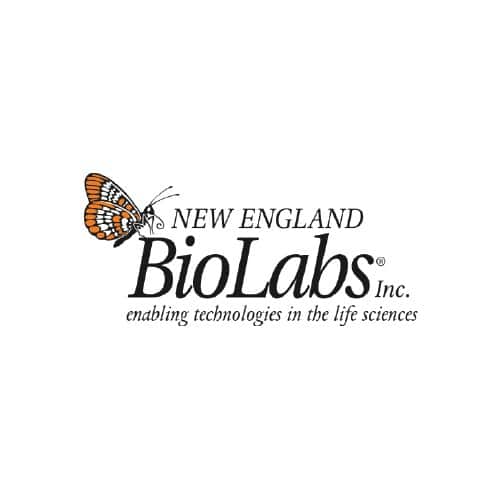
ssRNA Ladder – 25 gel lanes
RM0.00Brand:
New England Biolabs
The ssRNA Ladder is a set of 7 RNA molecules produced by in vitro transcription of a mixture of 7 linear DNA templates. The ladder sizes are: 9000, 7000, 5000, 3000, 2000, 1000 and 500 bases. The 3000 base fragment is at double intensity to serve as a reference band. This ladder is suitable for use as an ssRNA size standard on denaturing or native agarose gels.

STAA Agar Base 500g
RM773.00Brand:
Thermo ScientificTM OxoidTM
- Oxoid STAA Agar Base is used for the isolation of Brochothrix thermosphactafrom food samples.
- Also available STAA Selective Supplement, Part No. SR0151E and STA Selective Supplement, Part No. SR0162E.
STAA Agar Base, Oxoid Composition
| Typical Formula* | gm/litre |
| Peptone | 20.0 |
| Yeast extract | 2.0 |
| Dipotassium hydrogen phosphate | 1.0 |
| Magnesium sulphate | 1.0 |
| Agar | 13.0 |
| pH 7.0 ± 0.2 @ 25°C |
STAA Agar, Oxoid Preparation:
Suspend 18.5g of STAA Agar Base in 500ml distilled water and bring gently to the boil to dissolve completely. Add 7.5g of glycerol and sterilise by autoclaving at 121° C for 15 minutes. Cool to 50°C and aseptically add:
a) for STAA Medium the contents of 1 vial of STAA Selective Supplement SR0151 reconstituted as directed.
b) for STA Medium the contents of 1 vial of STA Selective Supplement SR0162 reconstituted as directed.
Mix well and distribute into sterile Petri dishes.
Storage conditions and Shelf life
Store the dehydrated medium at 10-30°C and use before the expiry date on the label.
The prepared medium may be stored for up to 2 weeks at 2-8°C.

STAA Selective Supplement
RM0.00Brand:
Thermo ScientificTM OxoidTM
Oxoid STAA Selective Supplement is used for the isolation of Brochothrix thermosphacta from food samples.
- Add to STAA Agar Base, Part No. CM0881B
- Each vial supplements 500mL of medium
STAA Selective Supplement, Oxoid Composition
| Vial contents: (each vial is sufficient for 500ml of medium) | per vial | per litre |
| Streptomycin sulphate | 250.0mg | 500.0mg |
| Thallous acetate | 25.0mg | 50.0mg |
| Cycloheximide | 25.0mg | 50.0mg |
STAA Selective Medium Preparation:
Suspend 18.5g of STAA Agar Base in 500ml distilled water and bring gently to the boil to dissolve completely. Add 7.5g of glycerol and sterilise by autoclaving at 121° C for 15 minutes. Cool to 50°C and aseptically add the contents of 1 vial of STAA Selective Supplement SR0151 reconstituted as directed.
Storage conditions and Shelf life
Store the selective supplement in the dark at 2-8°C and use before the expiry date on the label.
The prepared medium may be stored for up to 2 weeks at 2-8°C.
Precautions
STAA Selective Supplement SR0151 contains cycloheximide and thallous acatate and is toxic if swallowed, inhaled or if in contact with skin.

Standard Plate Count Agar (Apha) 500g
RM358.00Brand:
Thermo ScientificTM OxoidTM
Thermo Scientific™ Oxoid Standard Plate Count Agar (Plate Count Agar) is a standard medium corresponding to the APHA formulation used for milk, food and dairy products.
Standard Plate Count Agar (Plate Count Agar), Oxoid Composition
| Typical Formula* | gm/litre |
| Yeast extract | 2.5 |
| Pancreatic digest of casein | 5.0 |
| Glucose | 1.0 |
| Agar | 15.0 |
| pH 7.0 ± 0.2 @ 25°C |
Standard Plate Count Agar (Plate Count Agar), Oxoid Preparation:
Suspend 23.5g in 1 litre of distilled water. Bring to the boil to dissolve completely. Dispense into bottles and sterilise by autoclaving at 121°C for 15 minutes.
Storage conditions and Shelf life
Store the dehydrated medium at 10-30°C and use before the expiry date on the label.
Store the prepared plates at 2-8°C.
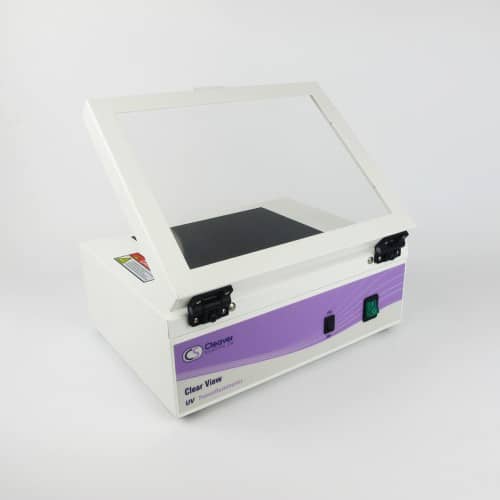
Standard UV Transilluminator
Brand:
Cleaver Scientific
Available in single and dual wavelength formats, in 21x21cm and 21x26cm sizes, our transilluminators are supplied either as standalone units or with the MicroDOC, as part of a fully integrated gel documentation system. With a large surface area, each transilluminator serves as the perfect workstation for viewing and working with fluorescently-stained protein and nucleic acid gels.
Standard features include a high/low intensity safety switch and an efficient starter that allows each of the six 8-Watt UV tubes to energise quickly without flickering, while special filter glass minimises unwanted background light. All of these features maximise contrast and sensitivity, allowing even the faintest fluorescent gels to be viewed. Two dual wavelength models offer added flexibility and convenience.

Staphylococcus Medium No 110 500g
RM852.00Brand:
Thermo ScientificTM OxoidTM
Oxoid Staphylococcus Medium No.110 is a selective medium is used for isolation and differentiation of pathogenic Staphylococci.
Staphylococcus Medium No.110, Oxoid Composition
| Formula | g/litre |
| Yeast extract | 2.5 |
| Tryptone | 10.0 |
| Lactose | 2.0 |
| Mannitol | 10.0 |
| Sodium chloride | 75.0 |
| Dipotassium hydrogen phosphate | 5.0 |
| Gelatin | 30.0 |
| Agar | 15.0 |
| pH 7.1 ± 0.2 |
Staphylococcus Medium No.110, Oxoid Preparation:
Suspend 150g in 1 litre of distilled water. Bring to the boil to dissolve completely. Sterilize by autoclaving at 121°C for 15 minutes. Disperse the precipitate by gentle agitation before pouring.
Storage conditions and Shelf life
Store the dehydrated medium at 10-30°C and use before the expiry date on the label.
Store the prepared medium at 2-8°C.
Precautions
Enterococcus faecalis may grow on this medium as tiny colonies with slight mannitol fermentation.
The high salt content in Staphylococcus Medium No.110 may interfere with the coagulase reaction. Always sub-culture to a non-inhibitory medium before testing.
Sterile Cryogenic Vials
RM0.00Brand:
Biologix
This item is not available at the moment. Please contact us for more information.
Characteristics
● Made of medical grade polypropylene
● Autoclavable
● Can be repeatedly frozen and thawed
● Universal screw threads
● Vials fit most common rotors
● Vials fit standard 1-inch and 2-inch freezer boxes
● Gamma radiation sterilized
● DNase & RNase free, endotoxin free, and human DNA free
● 81-8204 2ml self-standing vials have a white writing area and black graduations
● 81-7205 self-standing vials are brown.

Streptococcus Selective Supplement
RM430.00Brand:
Thermo ScientificTM OxoidTM
Oxoid Streptococcus Supplement is used for the isolation of Streptococci.
- Add to Columbia Blood Agar Base, Part No. CM0331B
- Each vial supplements 500mL of medium
Streptococcus Selective Supplement, Oxoid Composition
| Vial contents (each vial is sufficient for 500 ml of medium) | per vial | per litre |
| Colistin sulphate | 5.0 mg | 10.0 mg |
| Oxolinic acid | 2.5 mg | 5.0 mg |
Streptococcus Selective Supplement, Oxoid Preparation:
Reconstitute one vial as directed, aseptically add the contents to 500ml of sterile Columbia Blood Agar Base containing 5% Defibrinated Horse Blood SR0050 cooled to approximately 50°C. Mix gently and pour into sterile Petri dishes.
Storage conditions and Shelf life
Store the dehydrated medium at 10-30°C and use before the expiry date on the label.
Store the prepared medium at 2-8°C.

Streptomycin 300 (S300)
RM0.00Brand:
Thermo ScientificTM OxoidTM
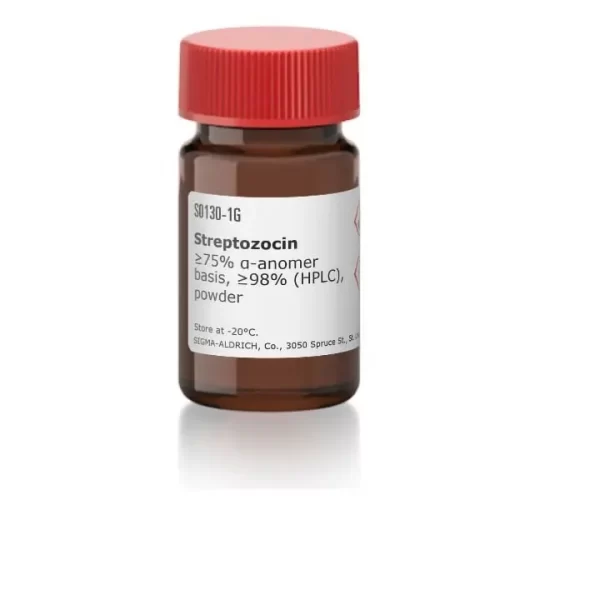
Streptozocin ≥75% α-anomer basis, ≥98% (HPLC) (Sigma-Aldrich)
RM2,001.00Brand:
Sigma
Description:
CAS Number : 18883-66-4
Molecular weight : 265.22 g/mol
Empirical formula : C8H15N3O7
Synonyms : N-(Methylnitrosocarbamoyl)-α-D-glucosamine, Streptozotocin
Streptozocin or streptozotocin, is obtained from Streptomyces achromogenes.[1] Streptozotocin, a glucosamine-nitrosourea, is a DNA alkylating agent that enters cells exclusively via the GLUT2 glucose transport protein. Streptozocin, a diabetagen, is especially toxic to pancreatic islet insulin-producing β-cells. It is toxic to GLUT2 positive neuroendocrine tumor cells.

Stuart Transport Medium (Modified) 500g
RM881.00Brand:
Thermo ScientificTM OxoidTM
Oxoid Stuart Transport Medium is a semi-solid non-nutritional transport medium for fastidious, pathogenic organisms.
Stuart Transport Medium, Oxoid Composition
| Typical Formula* | gm/litre |
| Sodium glycerophosphate | 10.0 |
| Sodium thioglycollate | 0.5 |
| Cysteine hydrochloride | 0.5 |
| Calcium chloride | 0.1 |
| Methylene blue | 0.001 |
| Agar | 5.0 |
| pH 7.4 ± 0.2 @ 25°C |
Stuart Transport Medium, Oxoid Preparation:
Suspend 16g in 1 litre of distilled water. Bring to the boil to dissolve completely and dispense into screw-capped 7ml bottles. Fill each bottle to the brim, tighten the cap and sterilise by autoclaving at 121°C for 15 minutes. When sufficiently cool to handle, mix by inversion.
Storage conditions and Shelf life
Store the dehydrated medium at 10-30°C and use before the expiry date on the label.
Store the prepared medium at 15-25°C.
Precautions
A small amount of blue colour at the top of the bottle indicates oxidation. If this colour extends down into the medium it should be discarded.
Avoid prolonged heating in open flasks, during the preparation of the medium, because thioglycollate is volatile.
Sodium glycerophosphate may be metabolised by some organisms and thus promote their growth.
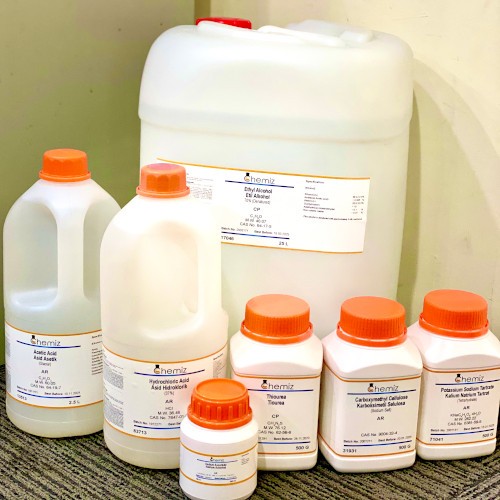
Sulphuric acid 95%-98% CP [Poison], 2.5L
RM0.00Brand:
Chemiz
Description
For purchase inquiries, please reach out to us for more information.
Synonyms: Hydrogen sulfate, Oil of vitriol
Formula: H2SO4
Sulphuric acid is a clear colorless or yellow liquid. It is highly corrosive, having pH as low as 1 depending on its concentration. It has many direct and indirect applications in modern industry, including the manufacture or fertilizer.
Note:
AR: Analitycal Reagent Grade: Reagents for analytical purpose or research work that need high purity.
CP: Chemically Pure Grade: Reagents for regular practical in its original purity.
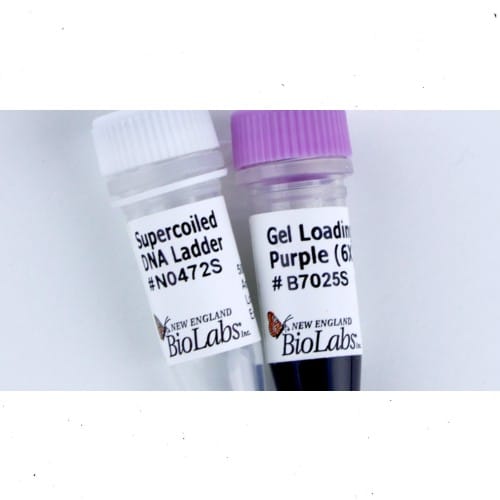
Supercoiled DNA Ladder – 100 gel lanes
RM0.00Brand:
New England Biolabs
The Supercoiled DNA ladder contains 9 proprietary supercoiled plasmids, ranging in size from 2 to 10 kb, that are suitable for use as supercoiled molecular weight standards for agarose electrophoresis. The 5 kb plasmid has an increased intensity to serve as a reference band.
- Recommended gel percentage range: 0.6-1%
- Optimum separation on 0.8%
- Recommended migration conditions: no more than 5V/cm (distance between electrodes), for no more than 60 minutes

Supreme TC Grade Agar, Plant Cell Technology
Price range: RM600.00 through RM990.00Brand:
Plant Cell Technology
A polysaccharide complex obtained through bleaching and hot water extraction of agarocytes from the red alga Rhodophyceae. Typical usage rate of 6 – 12 g/L medium. Supreme agar offers greater clarity of plant culture media.
Gel Strength: 1050 GM/CM2
Application:
Agar is used as microbial solid culturing media. The substance is often used in doses ranging between 0.5 to 1.0% (w/v) to solidify plant tissue culture media. Agar is an essential ingredient used for in vitro root development.

